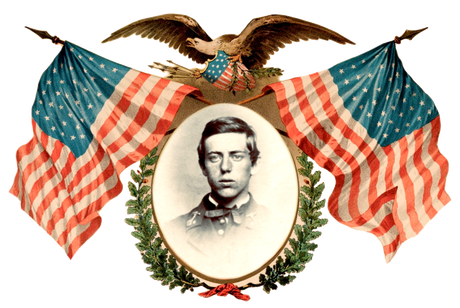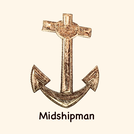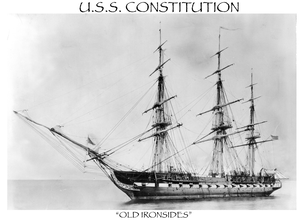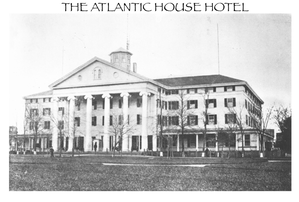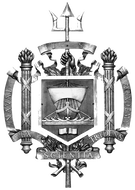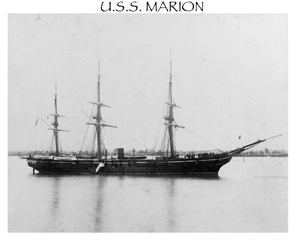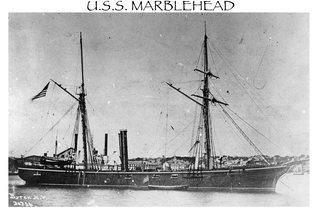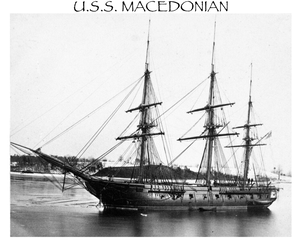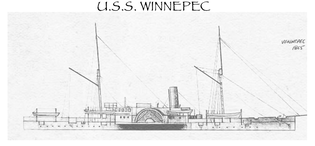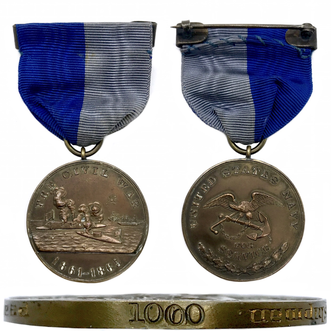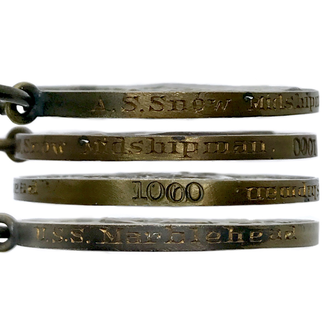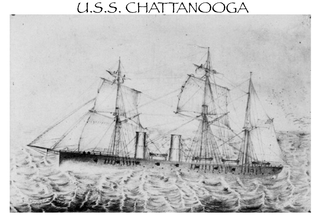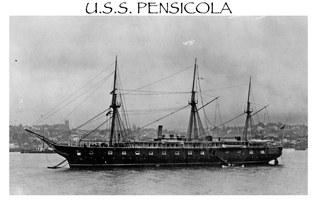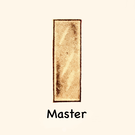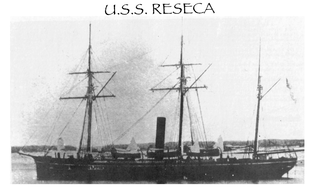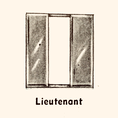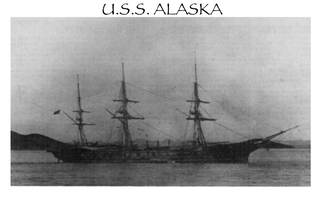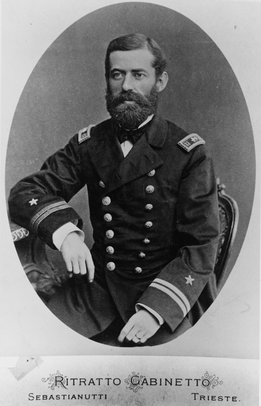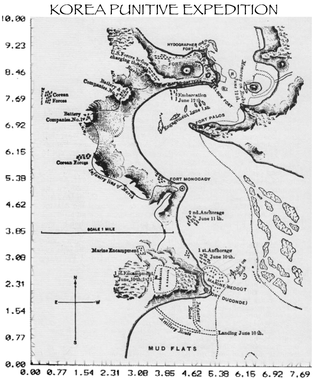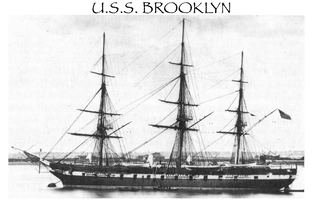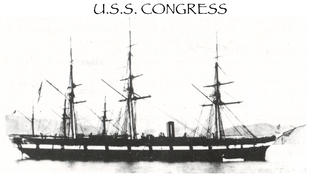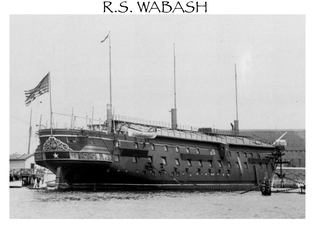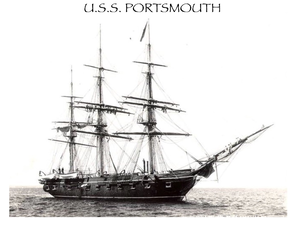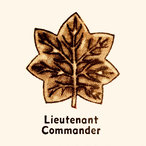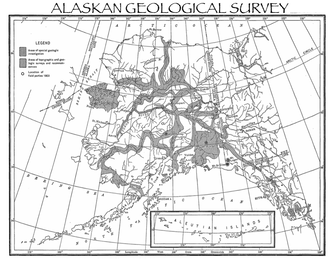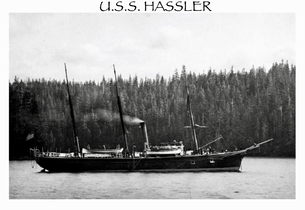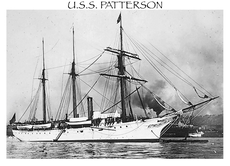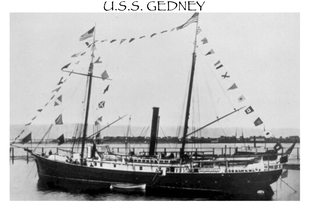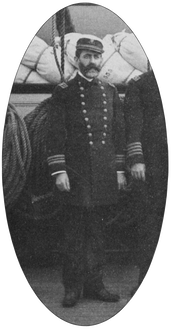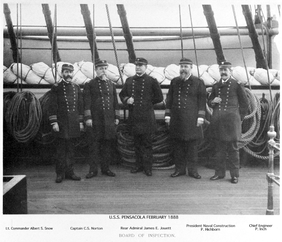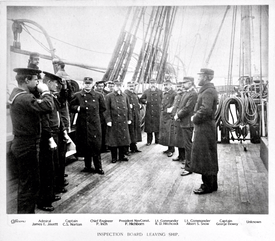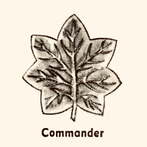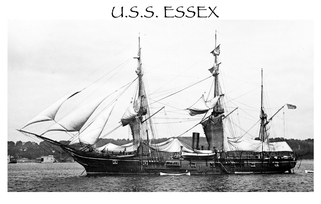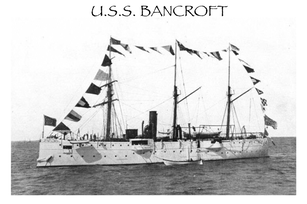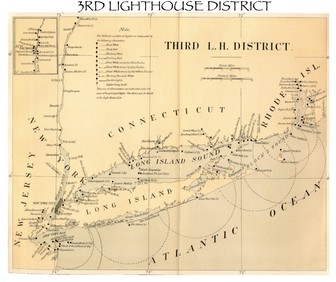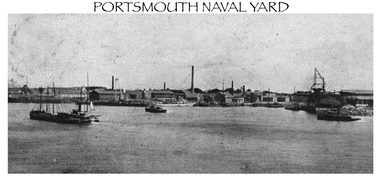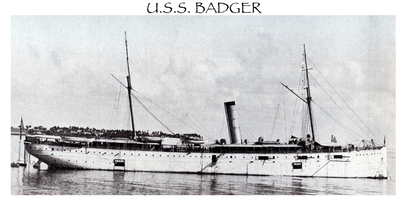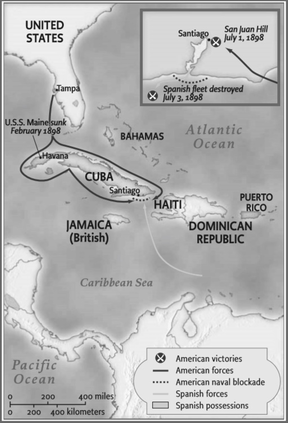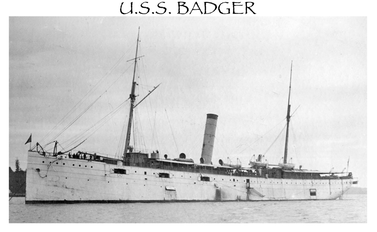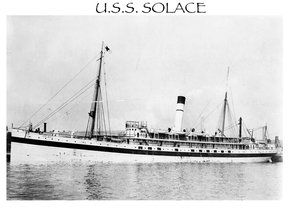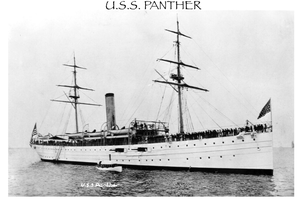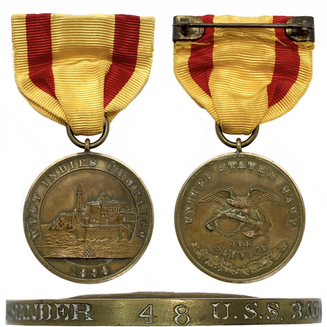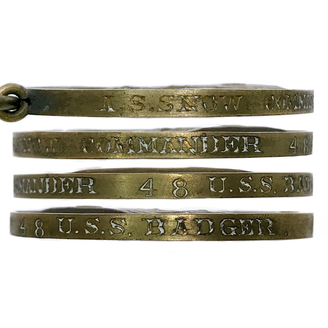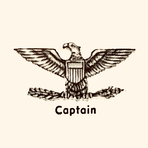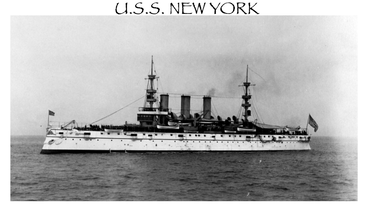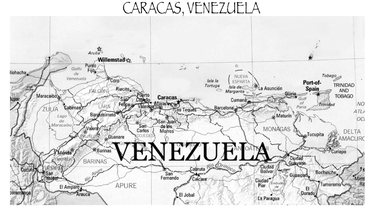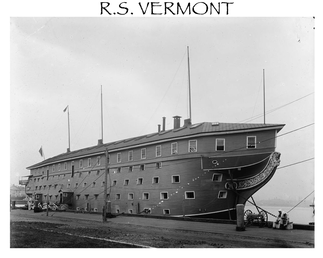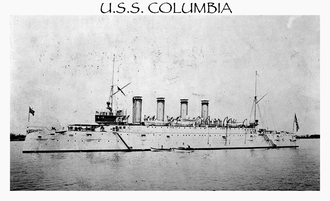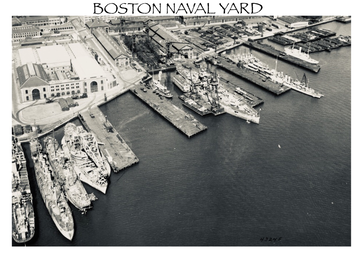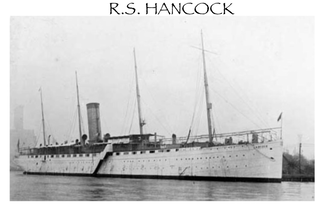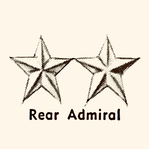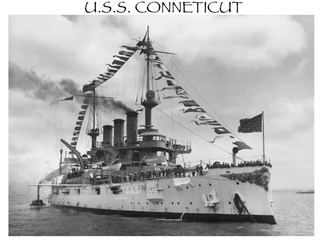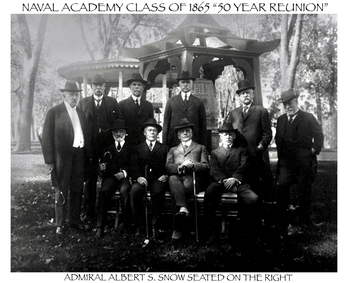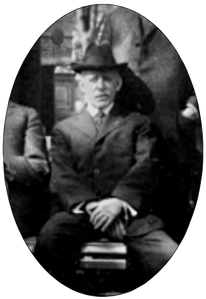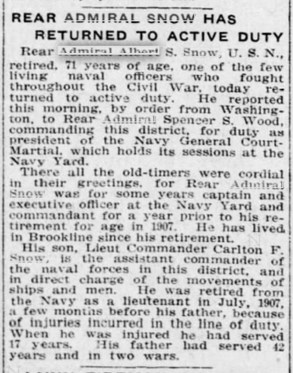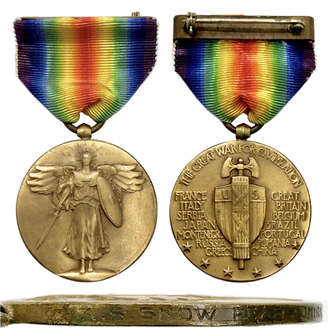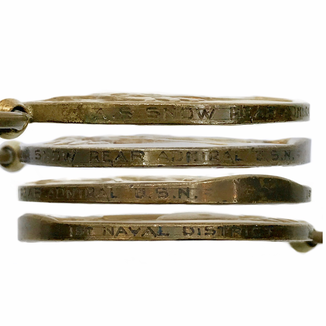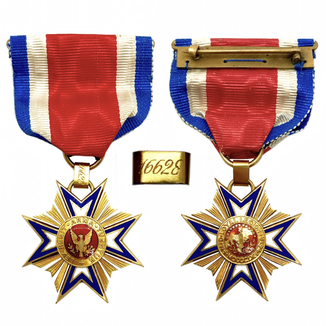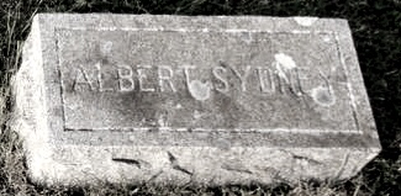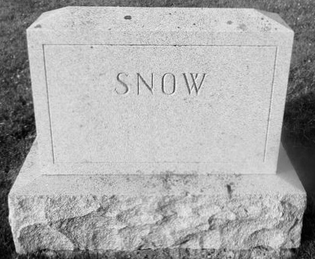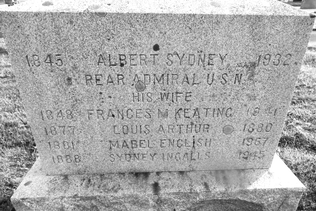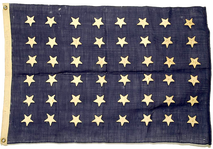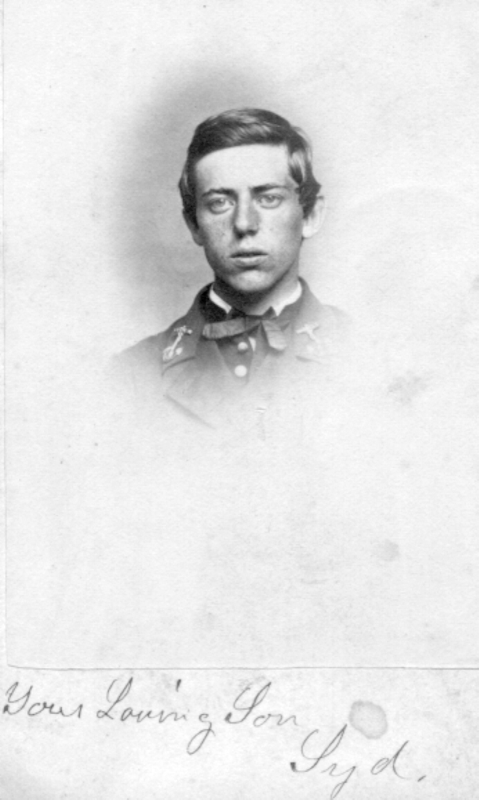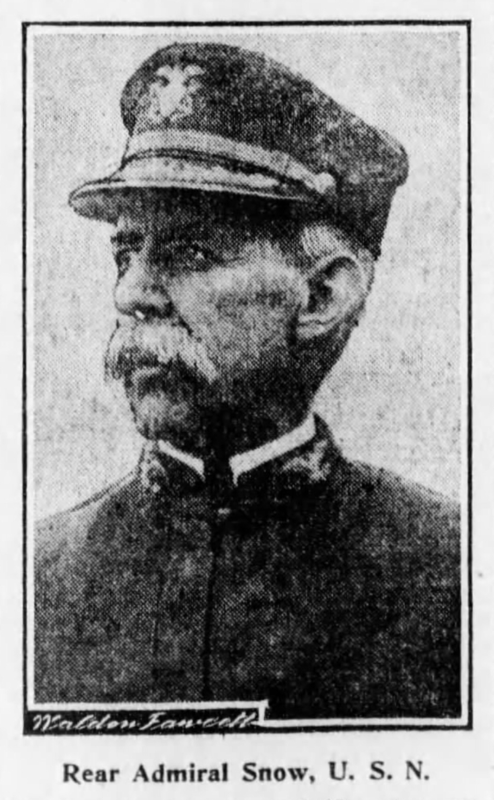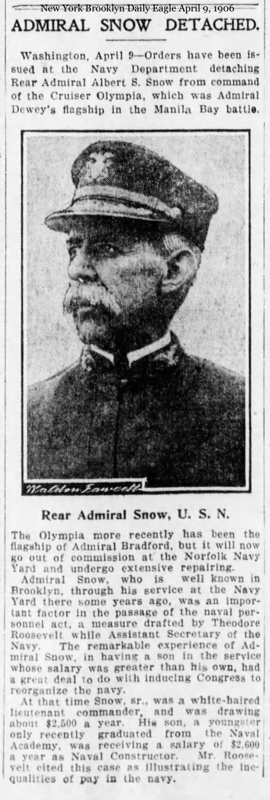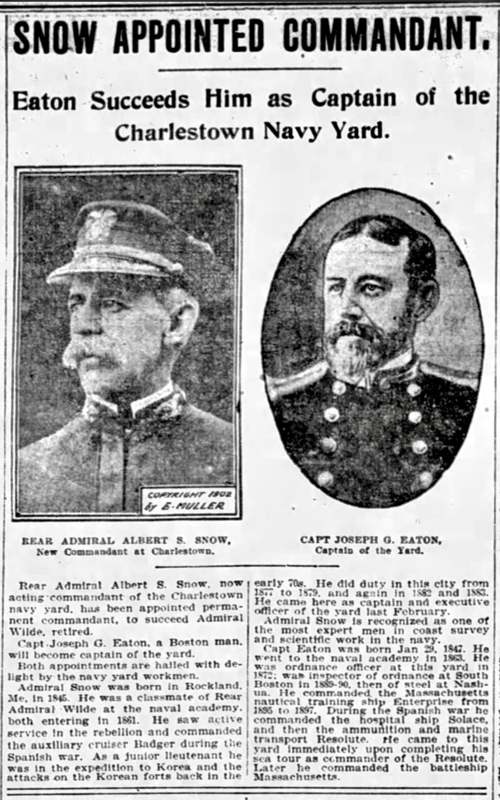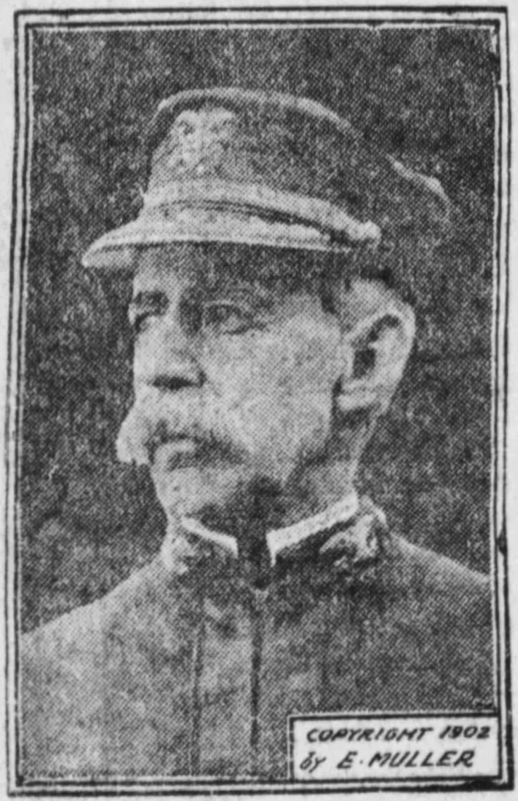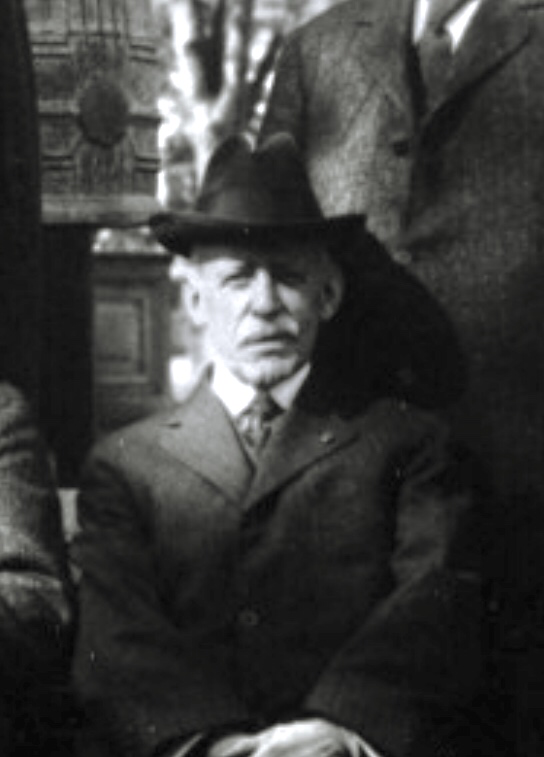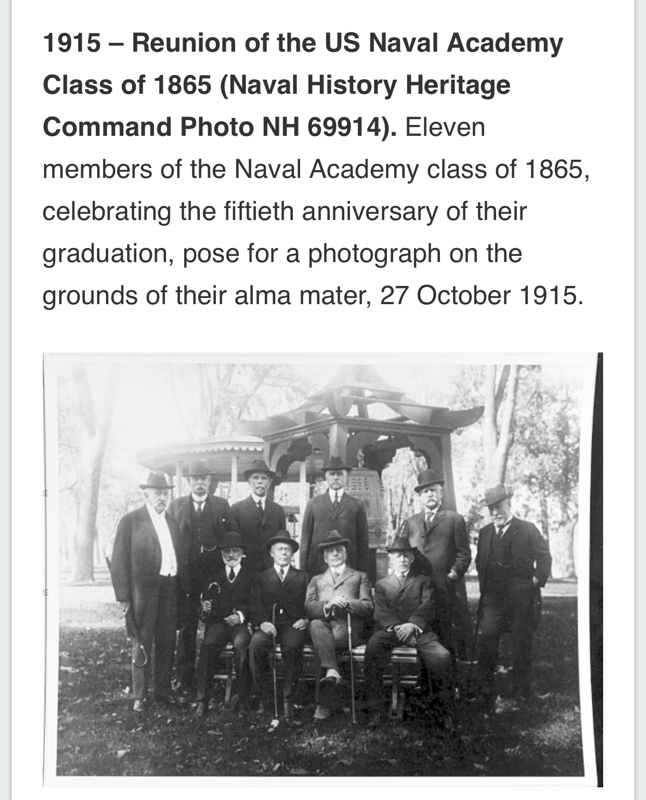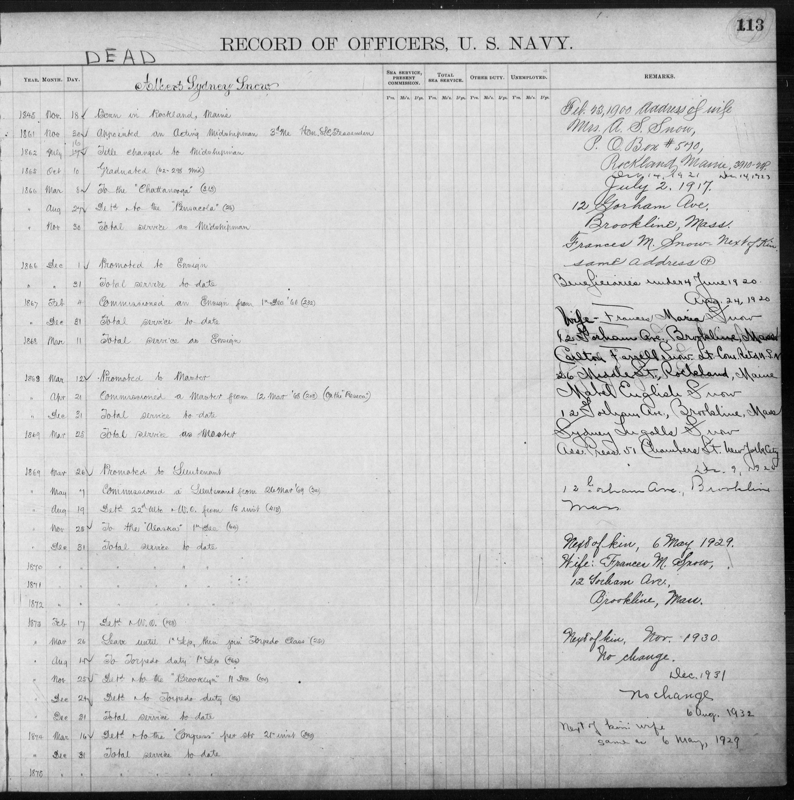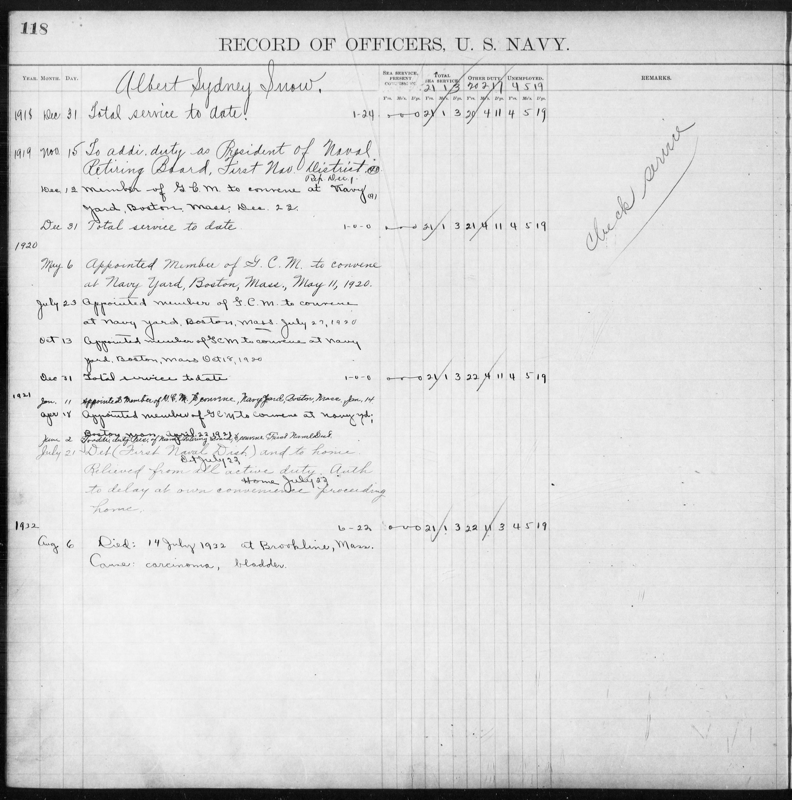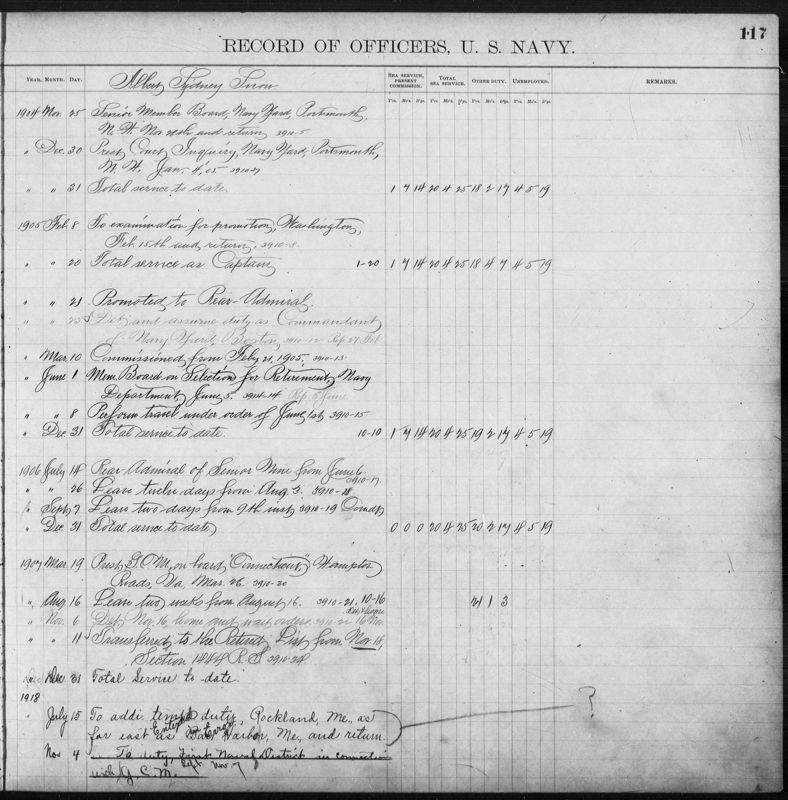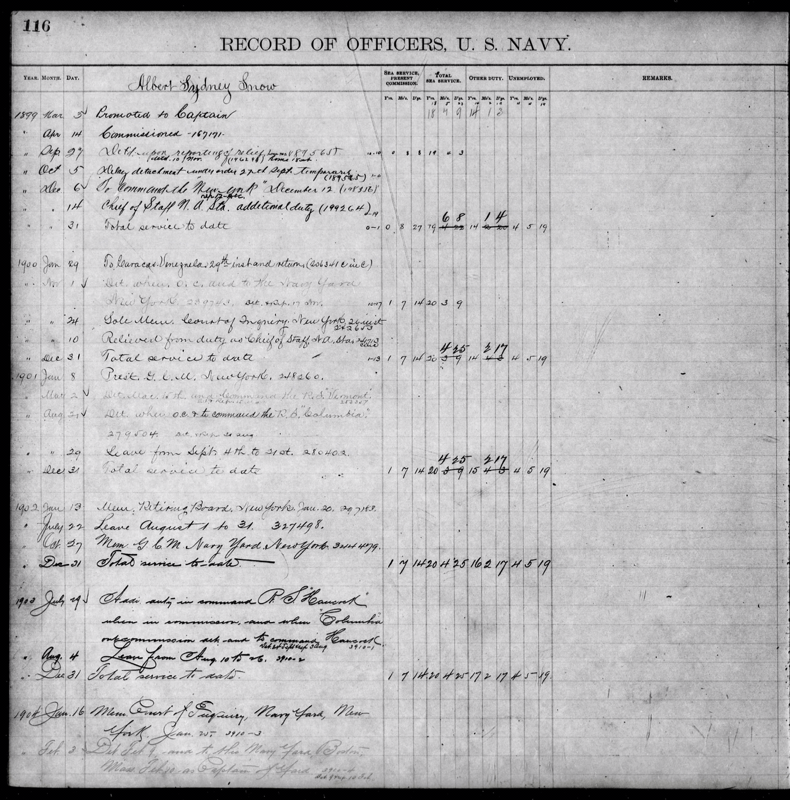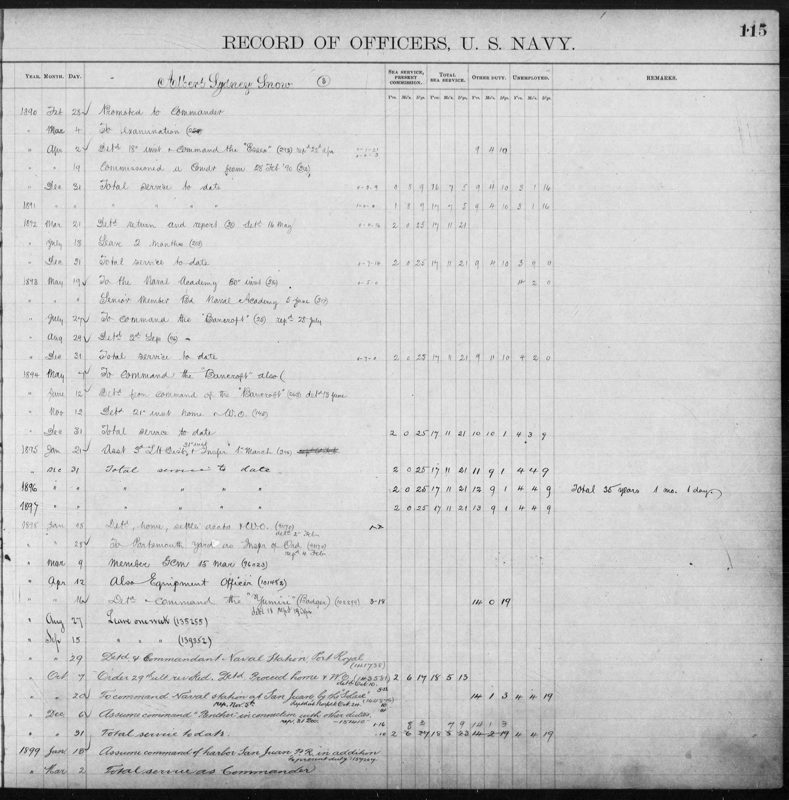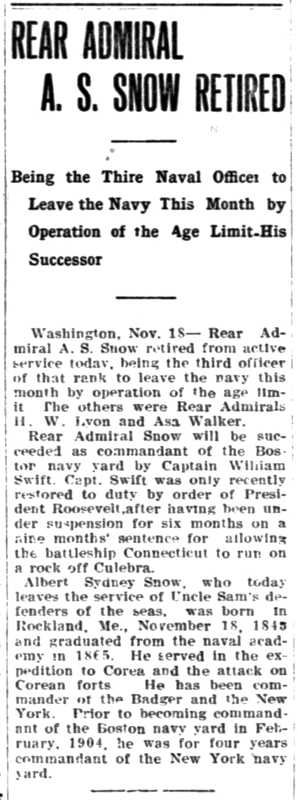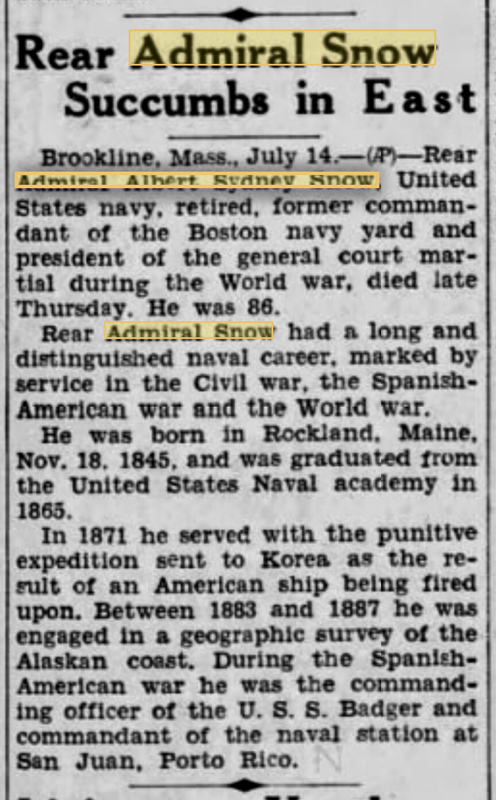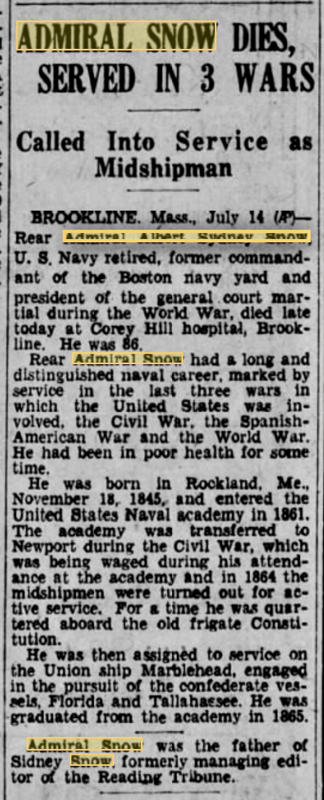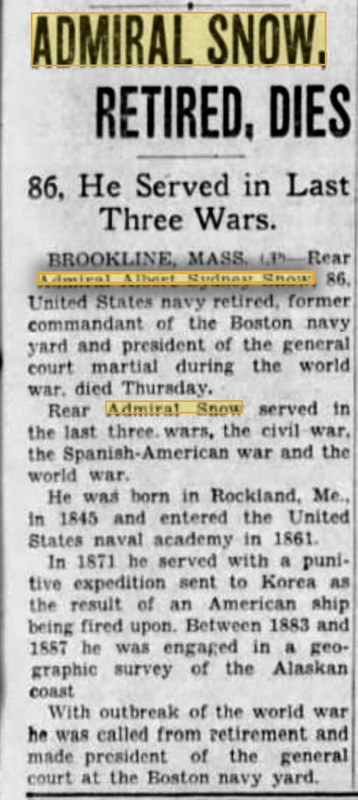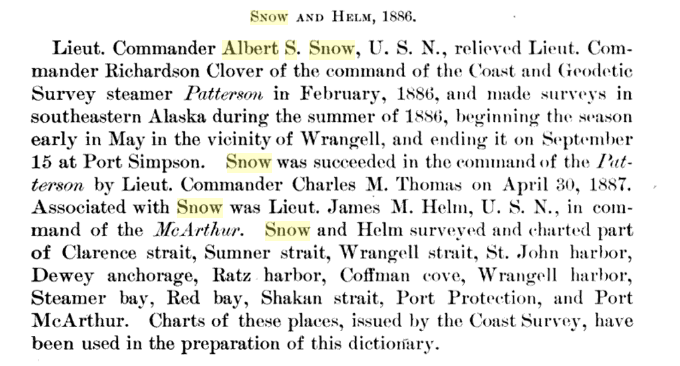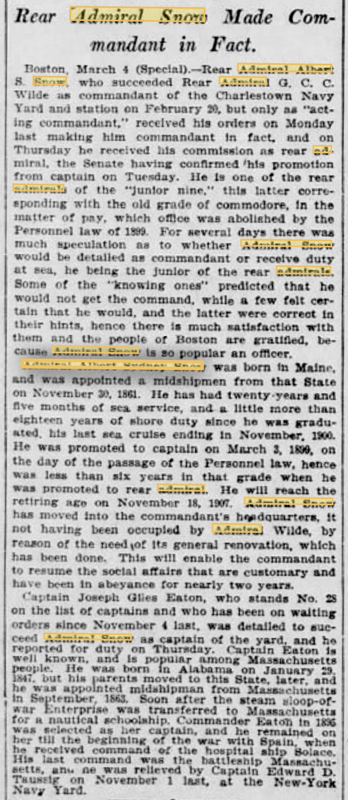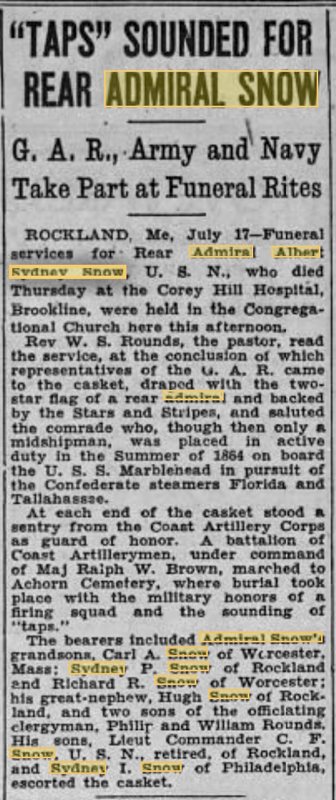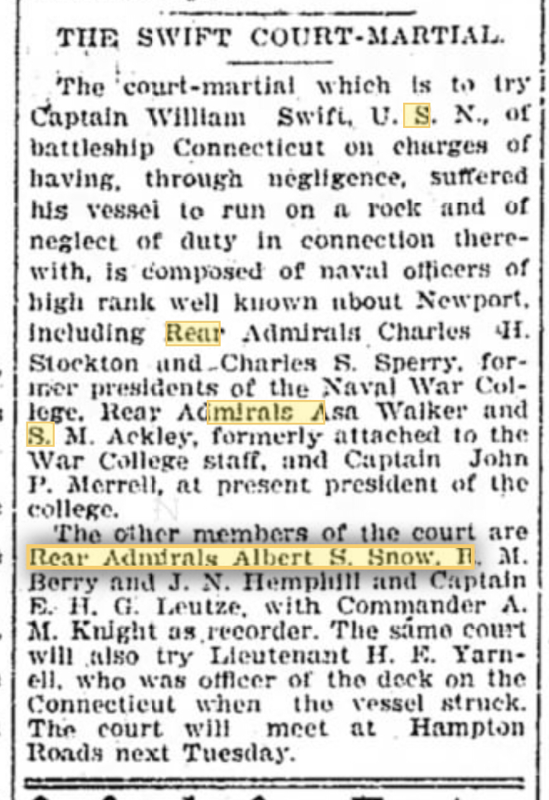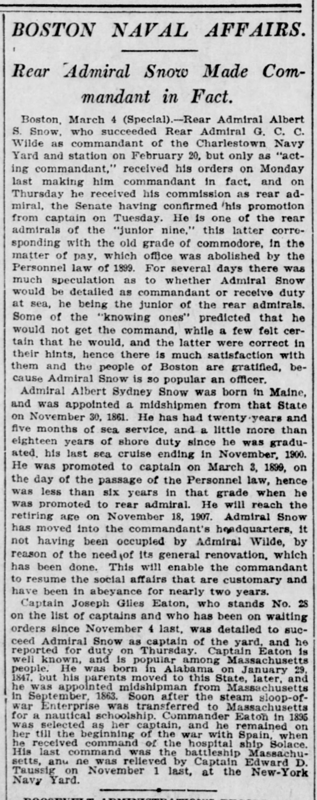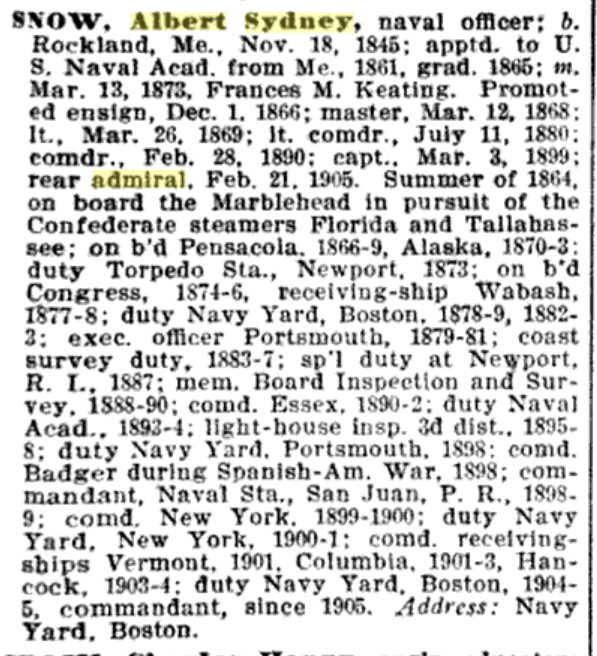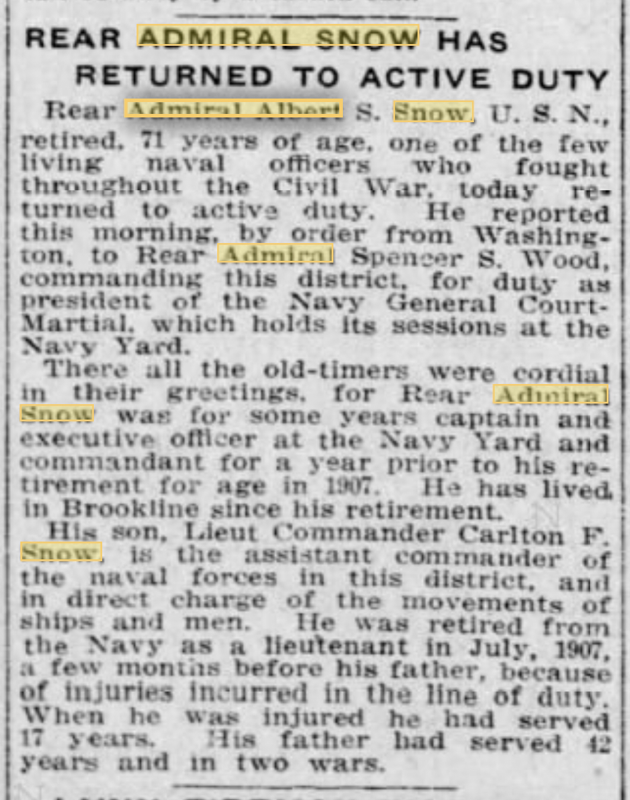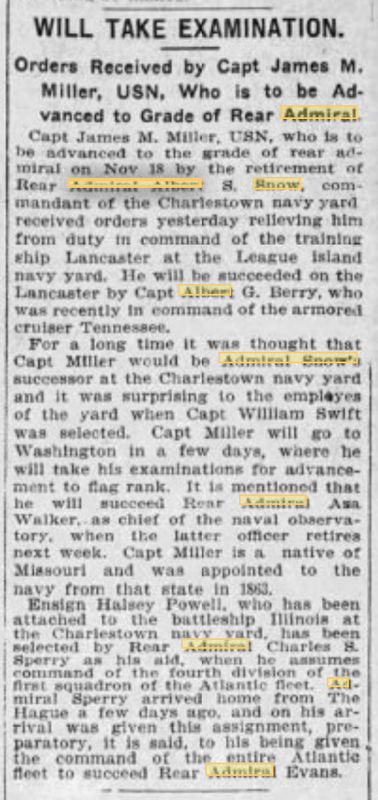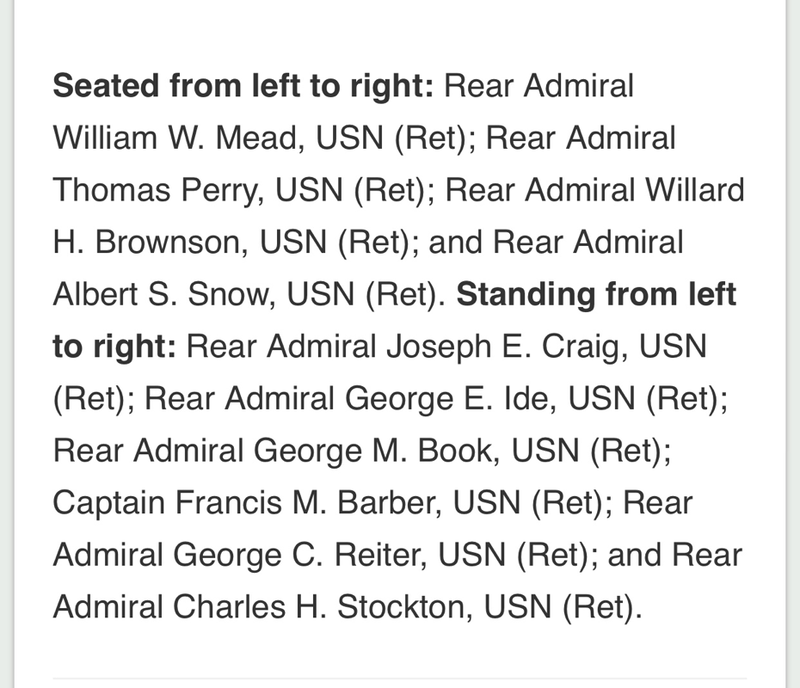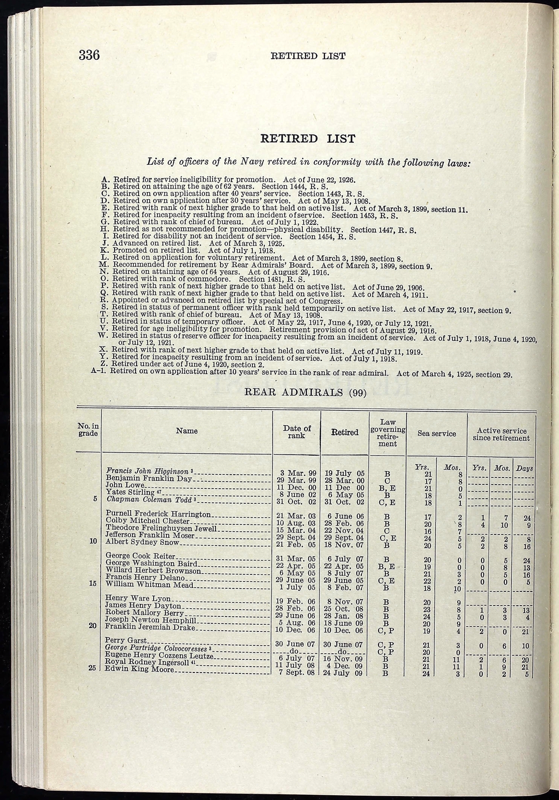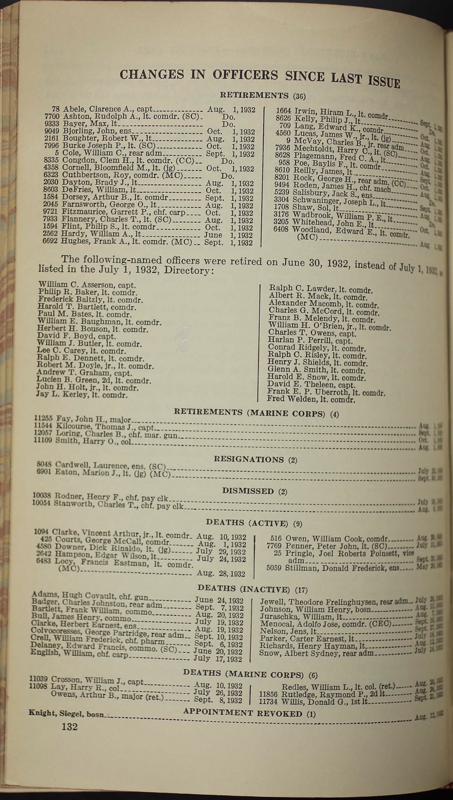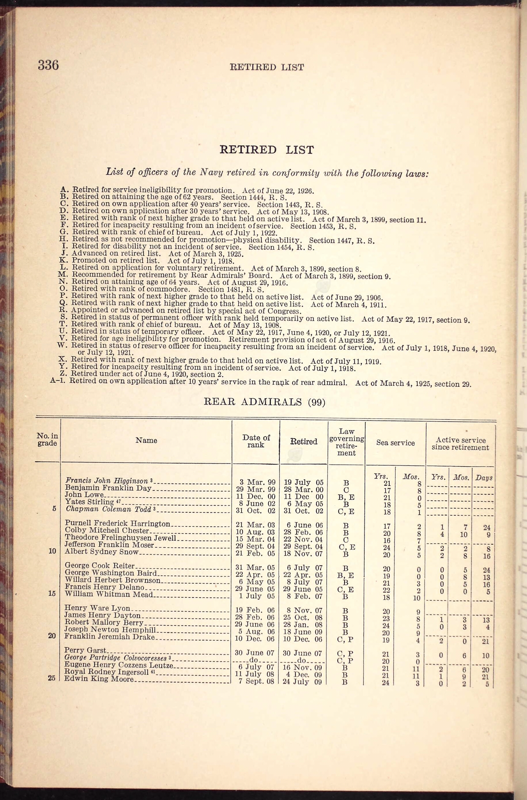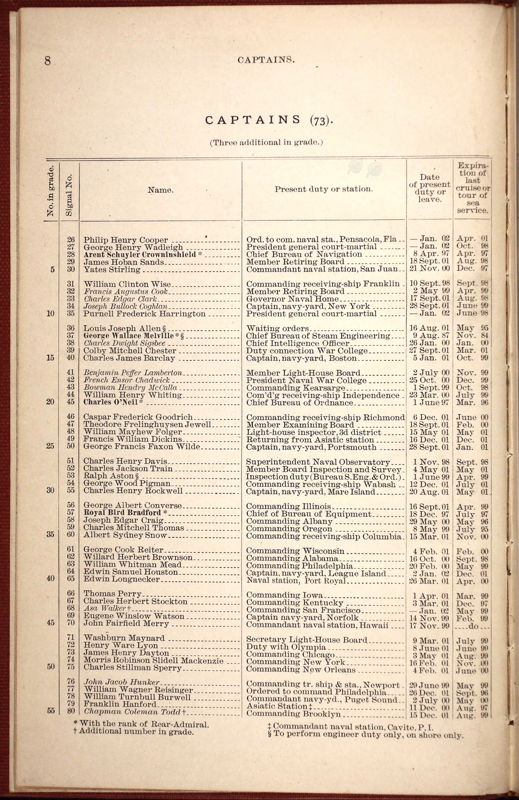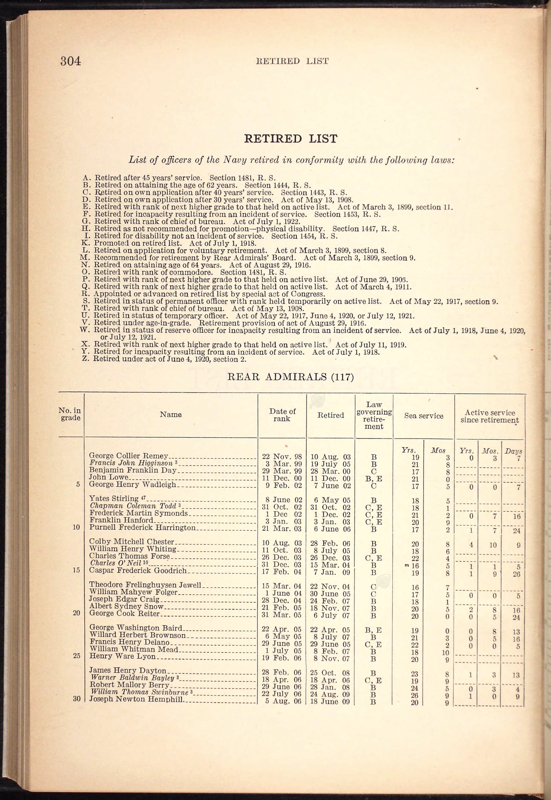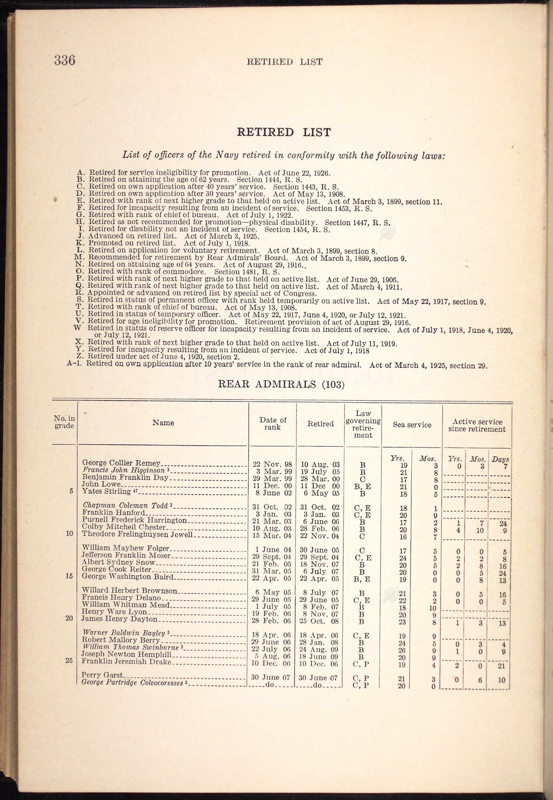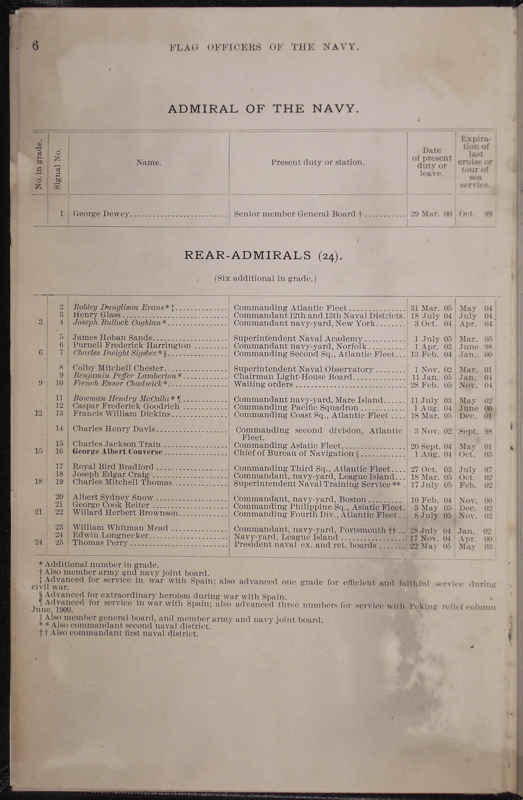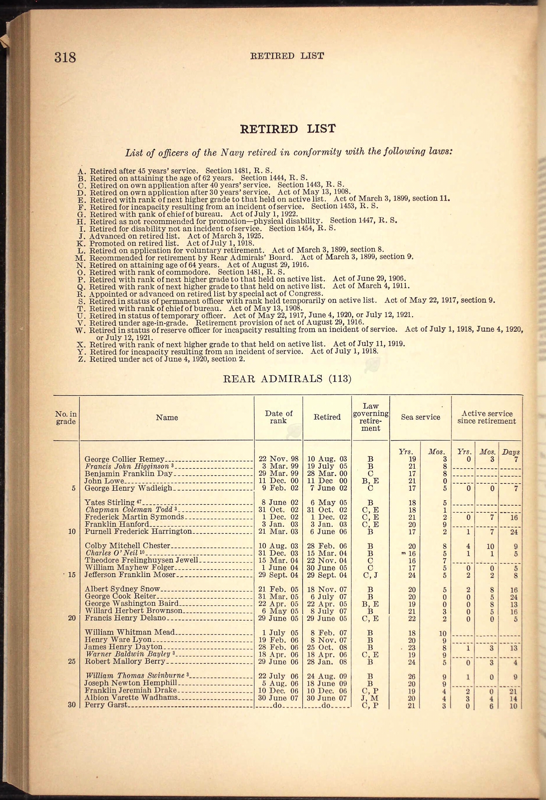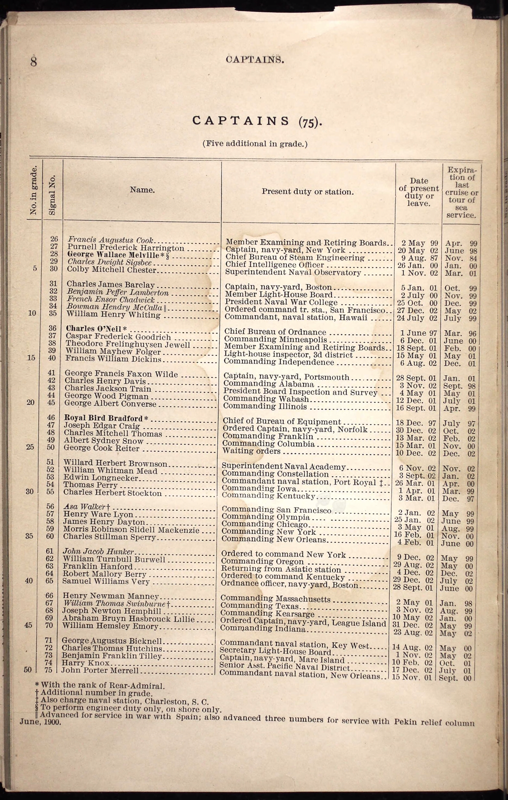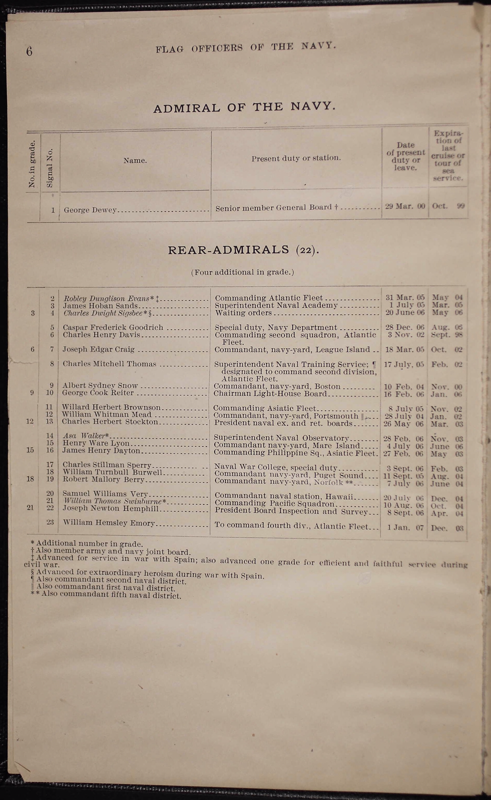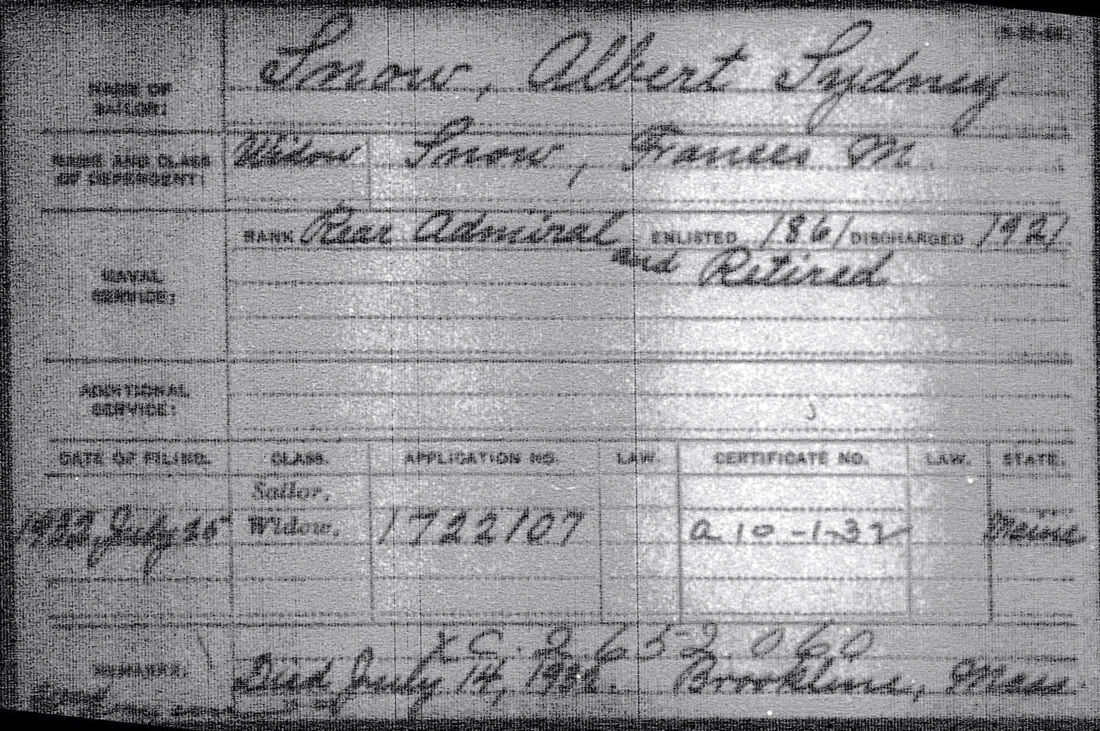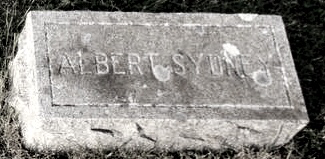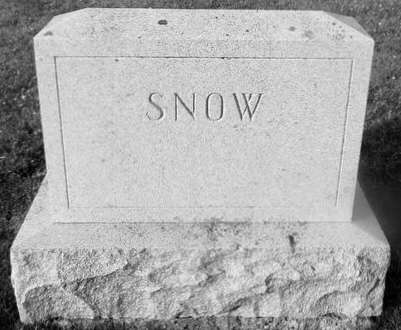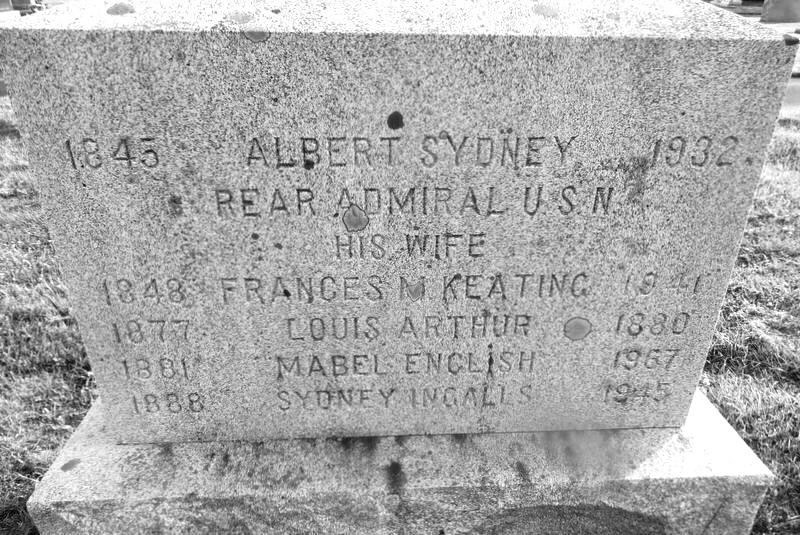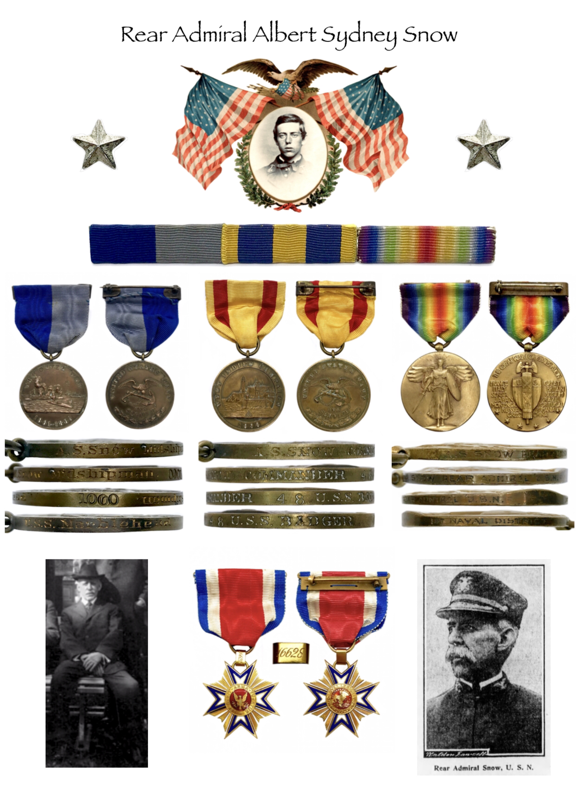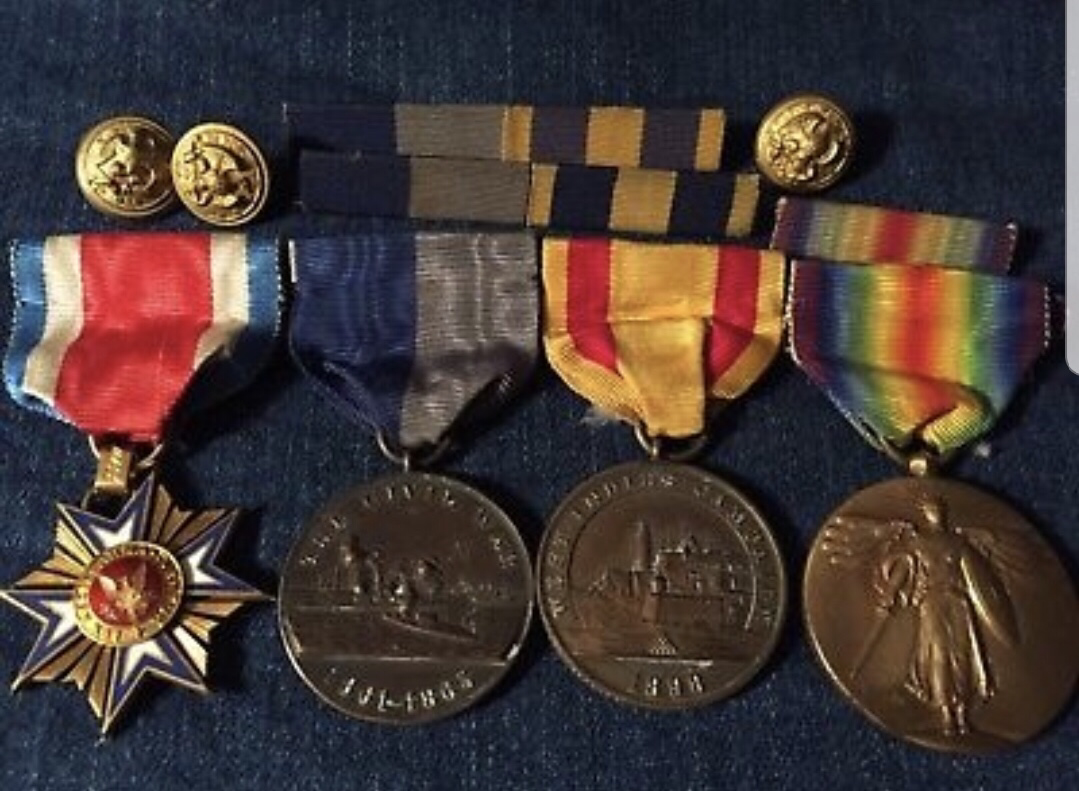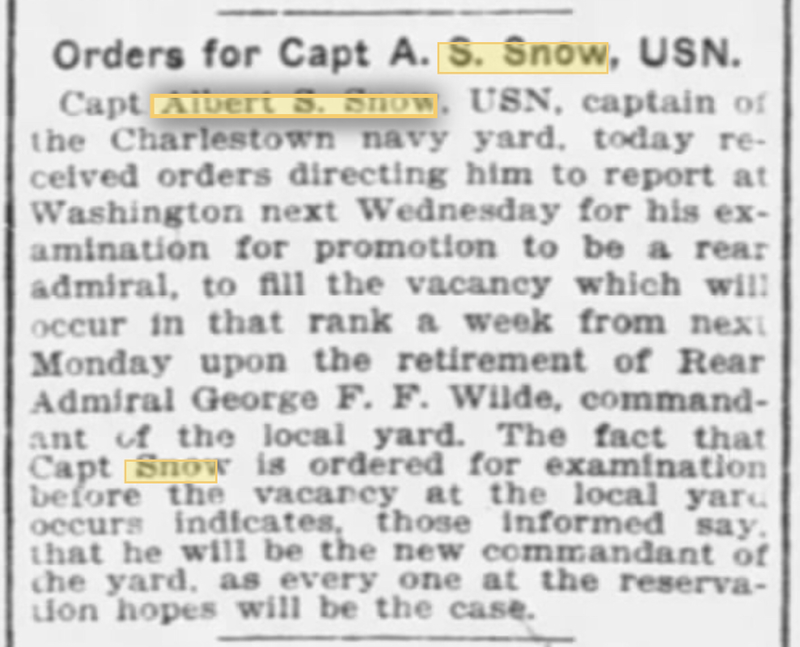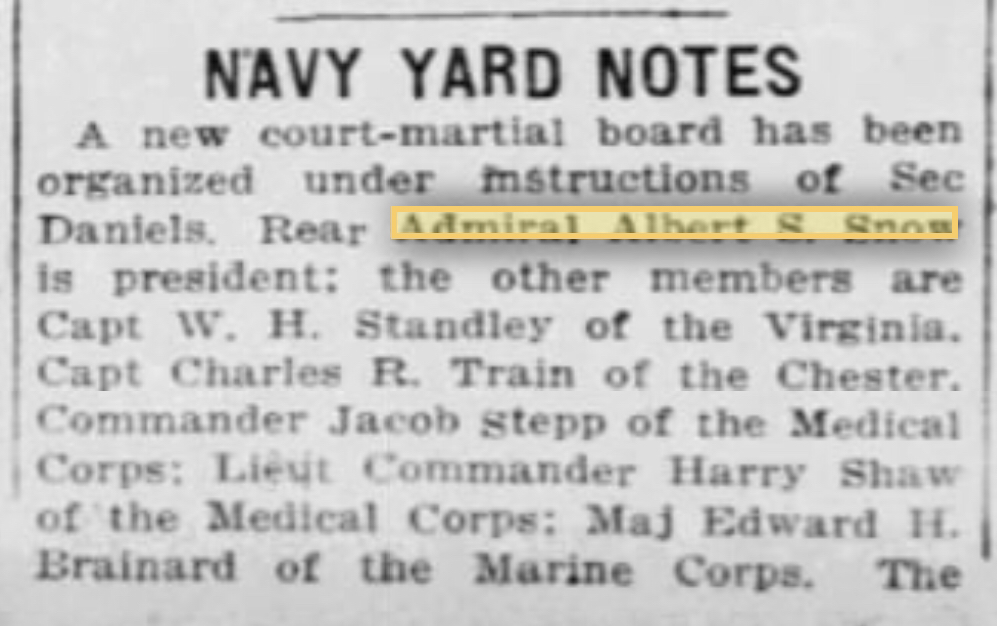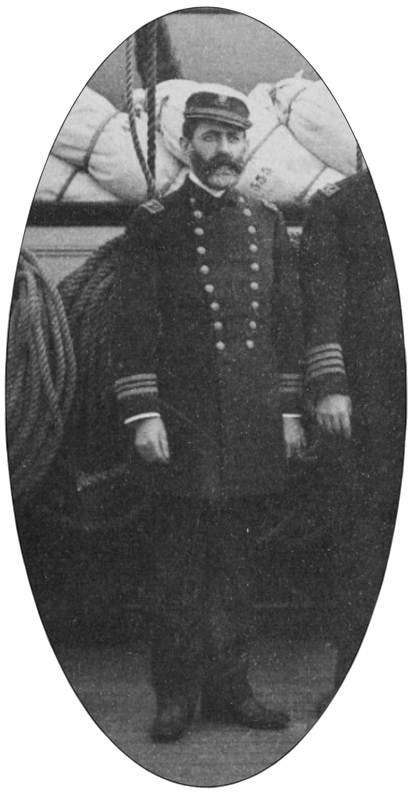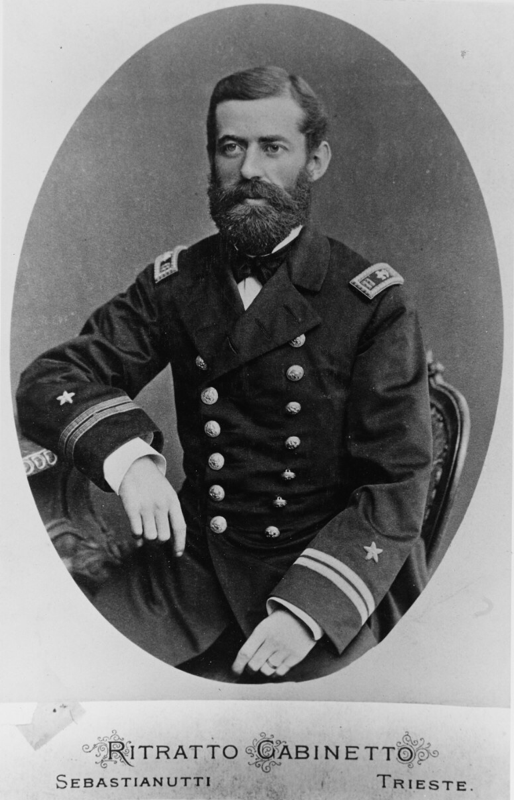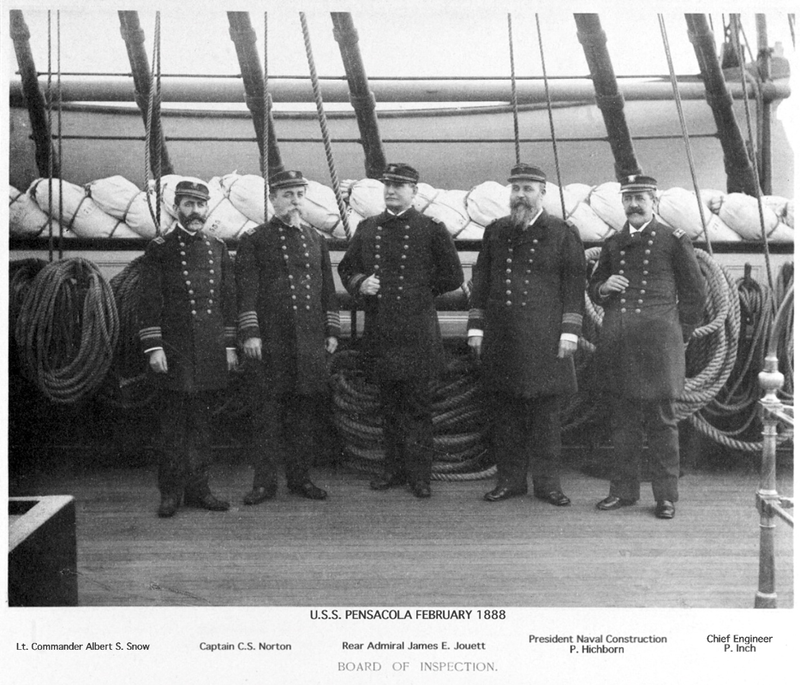CIVIL WAR - WORLD WAR I ADMIRAL GROUP
Rear Admiral
|
Unites States Navy Rear Admiral Albert Sydney Snow was born November 18th 1845 in Rockland, Knox County, Maine. Albert was appointed Acting Midshipmen at the Naval Academy on November 30th 1861, subsequently the Academy had been moved from Annapolis, Maryland to Newport Harbor, Rhode Island in wake of Confederate threats at the commencement of the Civil War.
|
|
Midshipman Snow and his class Graduated from the Naval Academy on October
10th 1865 after the Academy had been relocated back to Annapolis, Maryland. For his service aboard the U.S.S. Marblehead during the Civil War, Snow was issued Campaign Medal #1000. |
|
Snow was promoted to Ensign on December 1st 1866 and on March 8th 1866 he was transferred to the steam sloop U.S.S. Chattanooga where he served until August 27th 1866 when he was transferred to the steamer U.S.S. Pensacola. He remained stationed on the Pensacola for the next 1-1/2 years. |
|
Master Snow was then promoted to the rank of Lieutenant on March 26th 1869. His new orders brought him to the screw sloop-of-war U.S.S. Alaska on November 25th 1869.
|
|
On March 16th 1874 Lt. Snow was transferred to the Screw Sloop U.S.S. Congress as she sailed for the Mediterranean on April 9th 1874. The U.S.S. Congress visited ports on the coasts of Africa and Europe over the next 2 years before returning to Philadelphia to visit for the Centennial Exposition of 1876. |
|
Lieutenant Snow was promoted to the rank of Commander on February 28th 1890 and transferred to command the Steam Sloop-of-War U.S.S. Essex on April 2nd 1890 while it was moored at the Portsmouth, New Hampshire, Naval Yard being prepared as a Naval Academy training ship. On May 19th 1893 Commander Snow was transferred to the Naval Academy as a Senior Board Member. |
|
On January 21st 1895 Commander Snow was transferred to the 3rd Lighthouse district where he served as the instrument Inspector until he was transferred on December 1897.
|
Commander Snow was transferred to the
Portsmouth, Navy Yard on January 28th 1898 to be the Inspector of Ordinance. On March 9th 1897 Commander Snow was made a member of the General Court Marshall and a month later on April 12 he was made the equipment officer. |
|
For Commander Snow's service aboard the U.S.S. Badger during the Spanish American War, he was issued West Indies Campaign Medal #48.
|
|
On January 8th 1901 Captain Snow was appointed President of the General Court Martial of the New York Naval Yard. On March 2nd 1901 Captain Snow was transferred to the Receiving Ship U.S.S. Vermont where he served aboard for 6 months before being transferred to Command the Receiving Ship U.S.S. Columbia at the New York Naval Yard on August 21st 1901. He remained stationed on the U.S.S. Columbia until he left for leave on December 29th 1901. |
|
Captain Snow was appointed a member of the Court of Inquiry at the Naval Yard, New York on January 16th 1904. On February 3rd 1904 Captain Snow was transferred to the Boston Naval Yard where he took Command of the Yard until he was transferred to the Portsmouth, Naval Yard New Hampshire. He was appointed President of the Court if Inquiry on December 30th 1904.
|
|
Retired Rear Admiral Snow attended the Naval Academy Class of 1861’s 50th reunion on October 27th 1915 at the Naval Academy.
|
|
Admiral Snow was a member of the Maine Commentary of the Military Order of the Loyal Legion of the United States, he was issued this 14k gold badge #16628.
|
|
United States Navy Rear Admiral Albert Sydney Snow passed away at 86 years old after losing a long battle of bladder cancer on July 14th 1932 at the Corey Hill Hospital. He is buried at the Achorn Cemetery, Rockland, Knox County, Maine. An entire battalion of Coast Artilleryman led by Major Ralph W. Brown marched to Achorn Cemetery to give the Admiral his full military honors of a 21 gun Salute and the sounding of “taps”. |


